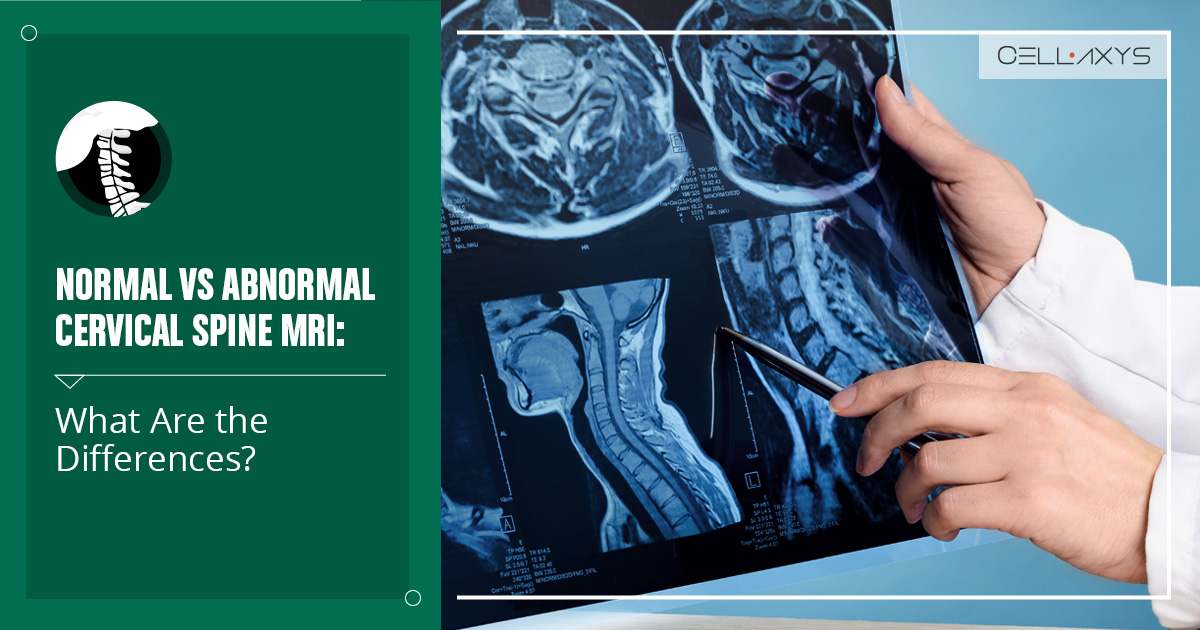Published on: March 16, 2020 | Updated on: March 12, 2024
Spinal fusion is a surgical procedure in which two or more vertebrae are permanently joined. Vertebrae are the small, interlocking bones of the spine. This is done to eliminate uncomfortable motion or restore spinal stability. Only after your doctor can establish the source of your discomfort will they offer spinal fusion surgery.
Why Get Spinal Fusion Surgery?
To relieve discomfort, increase stability, or rectify a deformity, spinal fusion permanently joins two or more vertebrae in your spine. Spinal fusion may be recommended by your doctor to address the following conditions:
- Spinal deformities: Spinal fusion can help address malformations in the spine, such as a lateral curvature (scoliosis).
- Spinal instability or weakness: If there is irregular or excessive mobility between two vertebrae, your spine may become unstable. This is a frequent complication of severe spine arthritis. In such circumstances, spinal fusion may be utilized to restore spinal stability.
- Herniated disc: After removing a damaged (herniated) disc, spinal fusion may be utilized to stabilize the spine.
Do you have Spinal Pain?
Fill out the form below to schedule your FREE virtual consultation
How Is Spinal Fusion Performed?
Surgeons execute spinal fusions while you are under anesthesia, so you are completely unaware of what’s going on. Various procedures for doing spinal fusion surgery have been devised by surgeons. The procedure employed by the surgeon is determined by the position of the fused vertebrae, the cause for the fusion, and, in certain cases, your overall health and body form.
These are the steps in spinal fusion surgery:
- Anesthesia: You will not be aware of or experience any discomfort throughout the spinal fusion operation since it is performed under general anesthesia. You’ll be laying down with a blood pressure cuff on your arm and a cardiac monitor on your chest during the treatment. This lets your surgeon and anesthesia provider keep an eye on your heartbeat and blood pressure while you are unconscious.
- Bone graft preparation: A spine surgeon will use more bone, known as a bone graft, to encourage bone fusion. In your procedure, your spine surgeon may utilize one type of bone graft or a mix of them. It is most usually extracted from your pelvis, leg, or ribs. Local autograft is when the surgeon takes bone from your spine.
- Fusion: The surgeon inserts a bone graft between the vertebrae to permanently fuse them. While the bone graft sets, metal plates, rods, or screws may be used to keep the vertebrae together.
Some surgeons employ synthetic material instead of bone transplants in certain circumstances. These synthetic materials aid to increase bone development and accelerating vertebral fusion.
Recovery From Surgery
Patients must stay in the hospital for a period of recuperation and supervision following a spinal fusion. This lasts 3-4 days on average. The doctor will want to monitor the patient’s reactions to the anesthetic and operation at first. The patient’s discharge date is determined by their general health, the physician’s procedures, and the patient’s response to the procedure.
Patients are taught new methods to move after surgery since their flexibility may be reduced. This offers new ways to securely walk, stand, and sit. For a few days, many patients may not be able to resume a typical solid food diet.
Patients frequently need to wear a back brace after they leave the hospital to keep their spine in good alignment. Patients typically cannot resume routine activities until the bone has fused into place. Fusing usually takes about 3 to 6 months. The age, overall health, and physical condition of a patient influence how soon they recuperate and return to their normal activities.
Complications Following Spinal Fusion
In most cases, spinal fusion is a generally safe treatment. However, spinal fusion, like any surgery comes with some risks. Before your treatment, your doctor will go through all of the risks with you and take particular precautions to assist you to prevent any issues. The following are some of the potential dangers and problems of spinal fusion:
- Infection: To reduce the risk of infection, antibiotics are given to the patient before, during, and after the operation.
- Pain at the graft site: A small minority of patients will have ongoing discomfort at the location of the bone transplant.
- Bleeding: A small amount of bleeding is to be expected, although it is rarely severe. Before a spinal fusion, it is typically not essential to donate blood.
- Recurring symptoms: Some people may have a repeat of their initial symptoms. There are several reasons for this. If your initial symptoms return, tell your doctor so they can figure out what’s causing them.
- Pseudarthrosis: The result of when spinal fusion surgery fails. Some patients with this ailment have no symptoms, while others have back, neck, arm, or leg discomfort.
- Nerve damage: It’s conceivable that nerves or blood vessels will be damaged as a result of these procedures. This consequence is extremely uncommon.
- Blood clots: The production of blood clots in the legs is another unusual consequence. If they break off and migrate to the lungs, they represent a serious threat.
It’s critical that you carefully follow your doctor’s recommendations regarding the warning signs of blood clots and infection. These issues are more likely to arise in the first few weeks following surgery.
A blood clot can move through the circulation and end up in the lungs on rare occasions. You may have acute chest discomfort, shortness of breath, or coughing if this happens. If you see any of these signs or symptoms, call your doctor immediately.
Spinal Fusion Implant Failure
Spinal instrumentation, also known as spinal implants, devices, or hardware, involves the implantation of stainless steel, titanium, titanium alloy, or non-metallic items into the spine by surgical procedures. Spinal instrumentation is a long-term remedy for spinal instability. Medical implants come in a variety of forms, sizes, and styles all of which are meant to treat spinal diseases in individuals of all ages.
Instrumentation is utilized during spinal fusion to assist spinal stability while also speeding up the bone fusion process. These treatments are used to restore spine stability, cure spinal deformity (such as scoliosis), and bridge space produced after a spinal decompression procedure by removing a spinal part.
If there isn’t enough support to hold the spine as it fuses, an instrumented fusion might fail. As a result, spinal hardware might be utilized as an internal splint to keep the spine in place as it heals following surgery. However, it can get fatigued and shatter (sort of like when one bends a paper clip repeatedly).
Implant failure, particularly early after back surgery, is a sign of persistent severe spinal instability. The greater the patient’s size and the more fused segments, the greater the risk of implant failure.
Alternative Treatments to Spinal Fusion
Surgeries are often extremely painful and have a very long recovery time. Regenerative medicine provides an alternative to spinal fusion. It includes platelet-rich plasma (PRP) therapy and cell-based therapies.
These treatments are non-invasive and less painful than conventional methods. At CELLAXYS, we offer two types of regenerative treatments.
- Cell-based therapies: This method includes extracting the patient’s healthy cells or “autologous” tissues, processing them, and reinjecting them into the injury site. The doctor takes these cells from the patient’s adipose (fat) tissue and bone marrow. When they take cells from the adipose tissue, it is called Minimally Manipulated Adipose Tissue (MMAT) transplant. When they replace the highly concentrated cells from your bone marrow with the damaged cells, it is called Bone Marrow Concentrate (BMAC).
- Platelet-rich plasma (PRP) therapy: It involves isolating platelets from the patient’s blood plasma, processing them, and returning them to the site of injury. Platelets are the body’s first line of defense against injuries. They contain 10 Growth Factors to promote healing, send chemical signals to attract cells from the blood, and produce a web-like structure called fibrin to support the development of new tissues.
Cell-based and PRP therapies are performed as outpatient procedures, meaning you can go home after the treatment. Cell-based therapies are completed within 1.5 to 2 hours, and PRP takes about 45 minutes. The doctor used live imaging, such as X-rays or ultrasounds, to spot the exact location of the transplant.
PRP and cell-based therapies are promising options for lumbar disc replacement and spinal fusion. This therapy can help with low back discomfort while lowering the risks and length of recovery time associated with spinal fusion surgery.
Sources
Footnotes
- Cotler JM, Star AM. Complications of spinal fusions. InSpinal fusion: science and technique 1990 (pp. 361-387). New York, NY: Springer New York.
- Raizman NM, O’Brien JR, Poehling-Monaghan KL, Warren DY. Pseudarthrosis of the spine. JAAOS-Journal of the American Academy of Orthopaedic Surgeons. 2009;17(8):494-503.
- Mroz TE, Wang JC, Hashimoto R, Norvell DC. Complications related to osteobiologics use in spine surgery: a systematic review. Spine. 2010;35(9S):S86-104.
- Försth P, Ólafsson G, Carlsson T, Frost A, Borgström F, Fritzell P, Öhagen P, Michaëlsson K, Sandén B. A randomized, controlled trial of fusion surgery for lumbar spinal stenosis. New England Journal of Medicine. 2016;374(15):1413-23.
- Christensen FB. Lumbar spinal fusion: Outcome in relation to surgical methods, choice of implant and postoperative rehabilitation. Acta Orthopaedica Scandinavica. 2004;75.
References
- Spinal Fusion. Mayo Clinic. Accessed 2/23/2024.
- Spinal Fusion. Cleveland Clinic. Accessed 2/23/2024.
- Postoperative Care for Spinal Fusion Surgery. SPINE-Health. Accessed 2/23/2024.
- What Is Spinal Instrumentation and Spinal Fusion? Health Central. Accessed 2/23/2024.
CELLAXYS does not offer Stem Cell Therapy as a cure for any medical condition. No statements or treatments presented by Cellaxys have been evaluated or approved by the Food and Drug Administration (FDA). This site contains no medical advice. All statements and opinions are provided for educational and informational purposes only.
Dr Pouya Mohajer
Author
Pouya Mohajer, M.D. is the Director of Spine and Interventional Medicine for CELLAXYS: Age, Regenerative, and Interventional Medicine Centers. He has over 20 years of experience in pain management, perioperative medicine, and anesthesiology. Dr. Mohajer founded and is the Medical Director of Southern Nevada Pain Specialists and PRIMMED Clinics. He has dedicated his career to surgical innovation and scientific advancement. More about the doctor on this page.
Dr Pejman Bady
Contributor
Dr. Pejman Bady began his career over 20 years ago in Family/Emergency Medicine, working in fast-paced emergency departments in Nevada and Kansas. He has served the people of Las Vegas as a physician for over two decades. Throughout this time, he has been met with much acclaim and is now the head of Emergency Medical Services in Nye County, Nevada. More about the doctor on this page.










